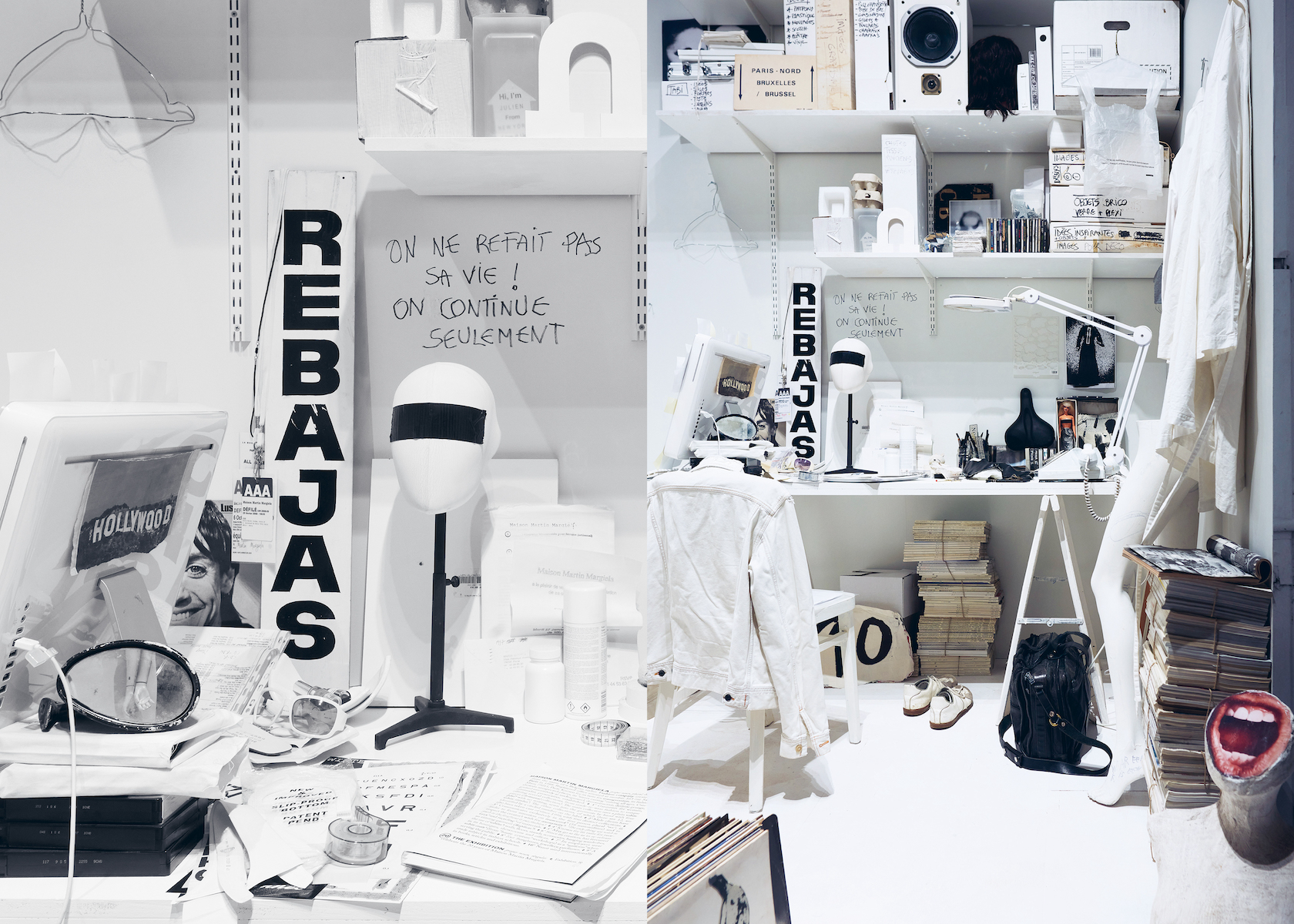‘We created our own island’: a new exhibition sees discreet Belgian fashion label Jan-Jan Van Essche step into the spotlight
Dal Chodha travels to Belgium to meet Jan-Jan Van Essche, the subject of a new exhibition at Antwerp’s MoMu that sheds light on the under-the-radar designer, whose eponymous label marries subtle elegance with extraordinary fabrications
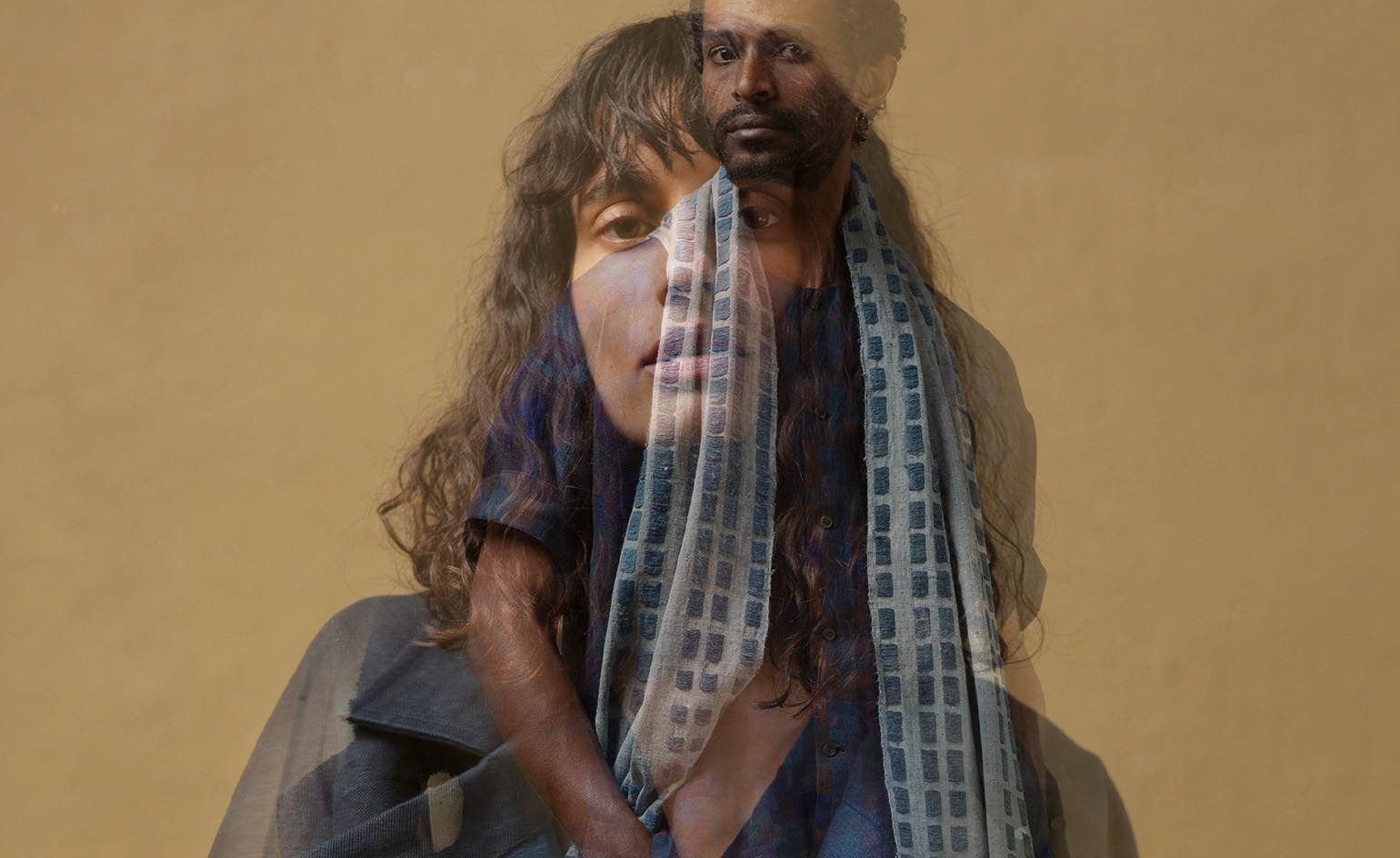
The world of designer Jan-Jan Van Essche is one often taken for bohemian. Cerebral perhaps. Yet for those that know, his clothes are exacting and refined. Mathematical in their construction, and magical in their elegance, their materiality is firmly of this world.
Van Essche graduated from the fashion department of the Royal Academy of Fine Arts in 2003 and set up his label in 2010 from Atelier Solarshop, the Antwerp boutique he runs with his partner, Pietro Celestina. A demi-retrospective based on his S/S 2025 collection is now on view at MoMu, The Fashion Museum in Antwerp. It is ‘the story at the point of where we are now,’ he says.
‘Jan-Jan Van Essche – Khayal’ at MoMu Fashion Museum Antwerp
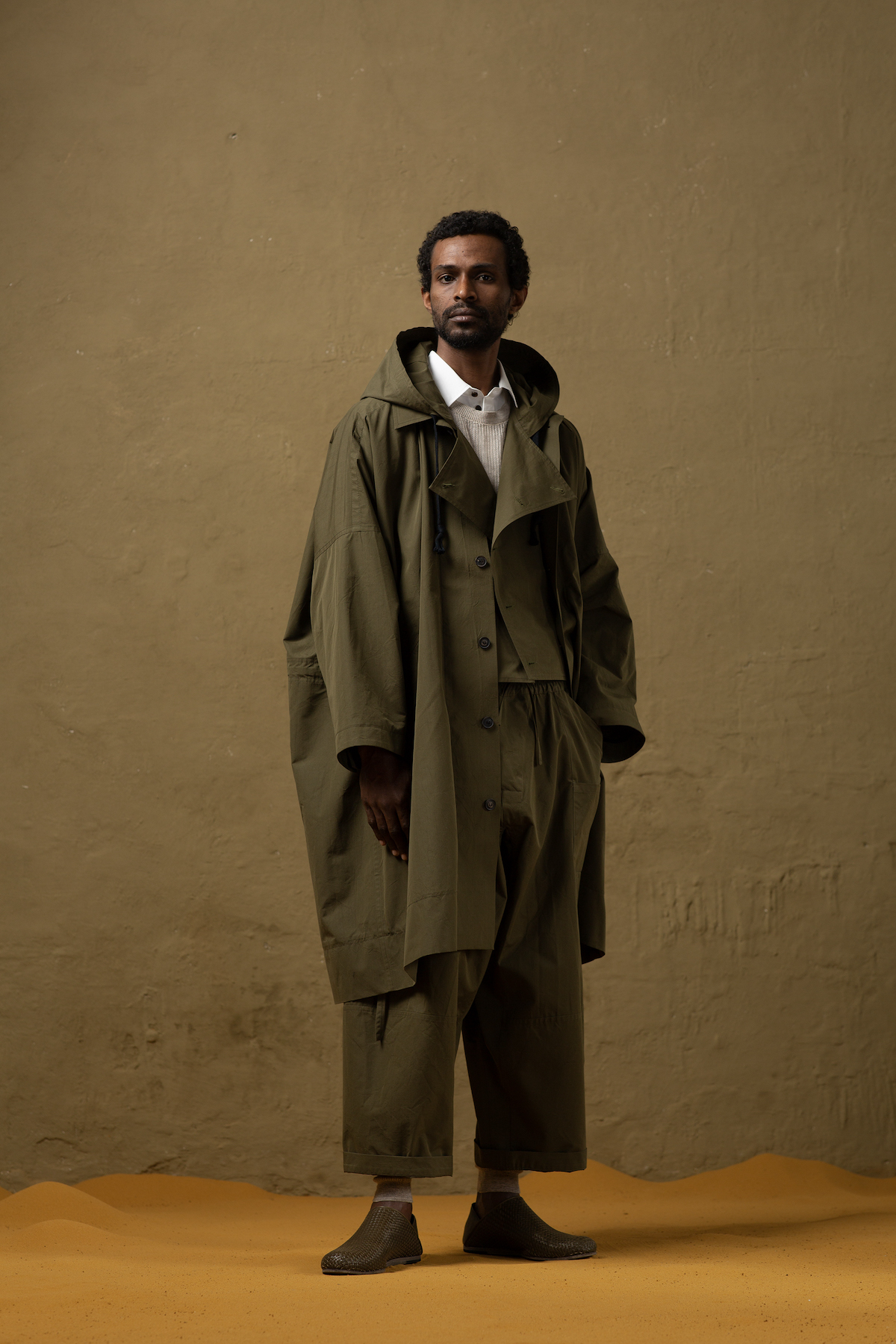
Jan-Jan Van Essche’s S/S 2025 collection, which is the nexus of a new exhibition at MoMu Antwerp
Passing through curtains handmade by Lamine Diouf, a weaving artist from Senegal with whom Van Essche has collaborated for many years, you arrive alongside a kind of Japanese veranda. Inside, ten mannequins made using reclaimed bar stools and wooden shovels by Rune Tuerlinckx are rooted into a fine desert sand. Their round plaster heads have been painted with tea and dyes. ‘My clothes are not really the kind you could put onto a wall and look at like an artwork. They are very discrete. They’re made for life, not for showing so in that sense I needed the dynamic of what you feel in these mannequins. Because it is subtle and muted, you must bring some oomph to it in another way.’ Hanging on these reclaimed materials, the clothes – mostly constructed from squares and rectangles – still appear full, with a gentle volume that suggests flesh and bone.
Part anthropological exposition, part craft conservation, textile development is really where Van Essche’s métier comes into its own. A green fabric that looks like polyester is actually a dense cotton with silk, woven on a shuttle loom that ceased to be used after the 1950s. It is designed by an 86-year- old man in Japan who once developed fabrics for Yohji Yamamoto and Comme des Garcons. A grey-green textile is chambray, woven with two different shades of older undyed cotton that was reintroduced into the textiles industry in the 1980s. Van Essche says: ‘If you aren’t told this, I don’t think you fully understand the clothes. If you have such a blank surface, it needs to be carried by a good fabric. Over the years we found so many incredible fabrics and I’m psyched to be able to work with them. I just want to share it and keep that alive. You’re also supporting culture and history when you wear them.
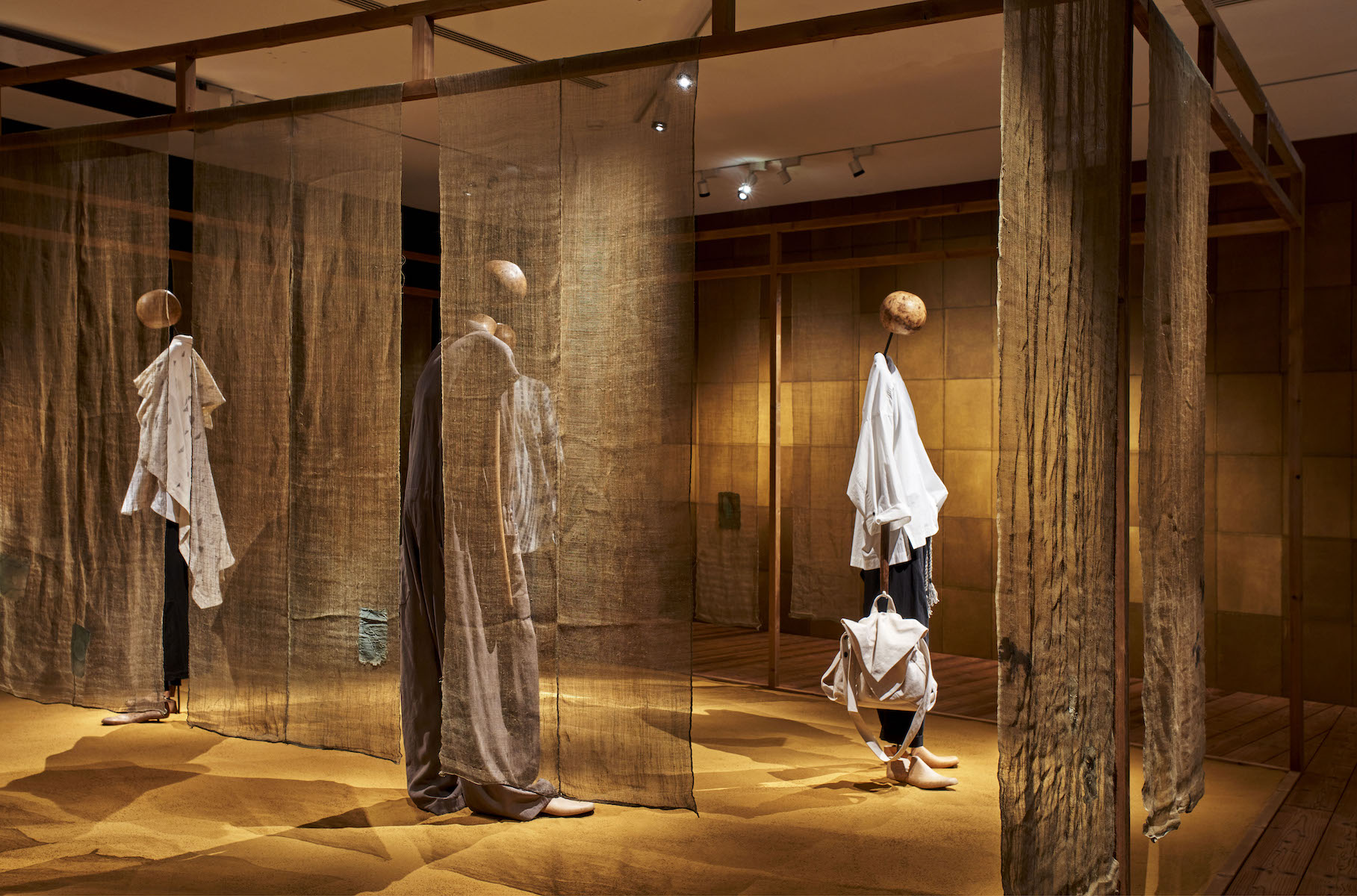
The exhibition, which features curtains by Lamine Diouf, a weaving artist from Senegal, and mannequins made from reclaimed bar stools by artist Rune Tuerlinckx
Last year he met Rituraj Dewan, co-founder of 7Weaves, a small textile company that work with indigenous tribes in Assam’s forests. The two clicked and spent hours talking about their frustrations with the term ‘sustainable fashion’. ‘We are quite sustainable, but I would never call myself that. I don’t want to be in that market – it’s a buzzword that’s often misused. I’d rather lead by example than have big words. For instance, this poplin, I don’t know that it's officially sustainable, but I do know that this factory has only eight looms, and there are five people working there and they will not over buy, and they will not over produce. You can be sustainable in the wages you pay, how you treat people, paying your invoices on time.’ For this collection, Van Essche spent two weeks in Assam developing the textiles.
Despite a show at Pitti in January 2023, the Jan-Jan Van Essche label still rests in the shadows. The exhibition at MoMu is evidence of a genuine quiet luxury far from an anodyne minimalism. ‘There are things that I'm just not busy with that some fashion houses need to be busy with. We just created our island. When Pietro and I started, we had just enough experience in the broader fashion world to begin but we were also unaware enough to have the guts to do it. Over the years we learned through feedback. We live and learn. I used to think, “oh god I don't know what I'm doing,” but, I’m finally getting rid of that.’
Jan-Jan Van Essche – Khayal runs at MoMu Fashion Museum Antwerp until June 8 2025.
Wallpaper* Newsletter
Receive our daily digest of inspiration, escapism and design stories from around the world direct to your inbox.
London based writer Dal Chodha is editor-in-chief of Archivist Addendum — a publishing project that explores the gap between fashion editorial and academe. He writes for various international titles and journals on fashion, art and culture and is a contributing editor at Wallpaper*. Chodha has been working in academic institutions for more than a decade and is Stage 1 Leader of the BA Fashion Communication and Promotion course at Central Saint Martins. In 2020 he published his first book SHOW NOTES, an original hybrid of journalism, poetry and provocation.
-
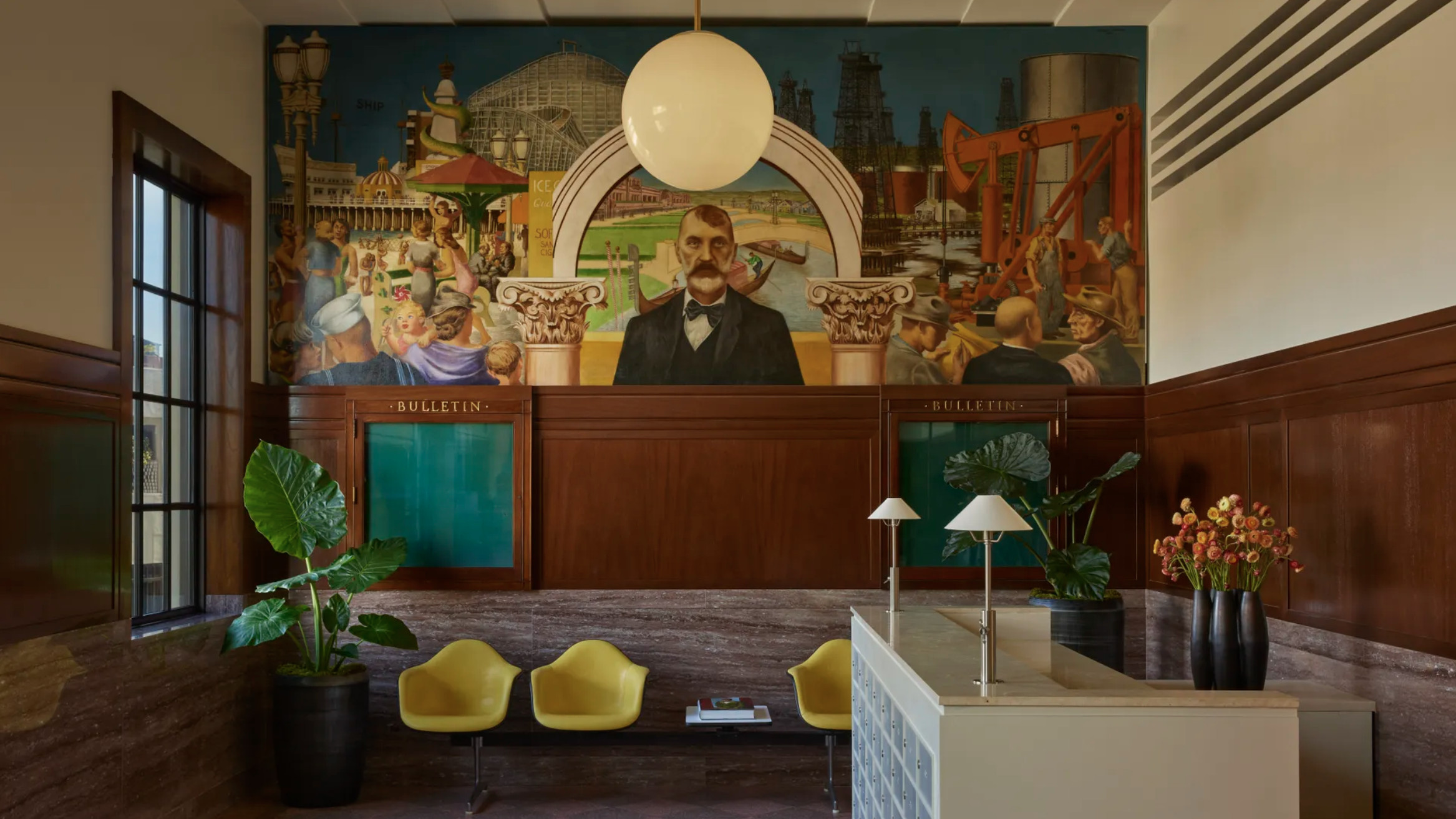 The Lighthouse draws on Bauhaus principles to create a new-era workspace campus
The Lighthouse draws on Bauhaus principles to create a new-era workspace campusThe Lighthouse, a Los Angeles office space by Warkentin Associates, brings together Bauhaus, brutalism and contemporary workspace design trends
By Ellie Stathaki
-
 Extreme Cashmere reimagines retail with its new Amsterdam store: ‘You want to take your shoes off and stay’
Extreme Cashmere reimagines retail with its new Amsterdam store: ‘You want to take your shoes off and stay’Wallpaper* takes a tour of Extreme Cashmere’s new Amsterdam store, a space which reflects the label’s famed hospitality and unconventional approach to knitwear
By Jack Moss
-
 Titanium watches are strong, light and enduring: here are some of the best
Titanium watches are strong, light and enduring: here are some of the bestBrands including Bremont, Christopher Ward and Grand Seiko are exploring the possibilities of titanium watches
By Chris Hall
